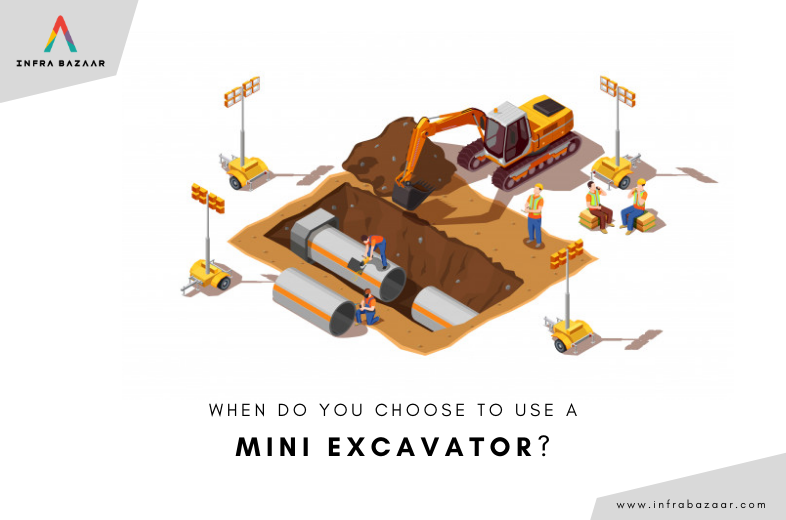
Posted By:Infra Bazaar
As discussed in our previous blog, mini excavators make many construction tasks safer, whilst increasing the efficacy. It’s comparatively smaller size allows for quick movement, even into tough or unreachable areas. This helps in speeding up many jobs, and like discussed in details in our previous blog, some of the jobs it is ideal for are:
Snow Plowing
Hole Digging
Demolition of small structures
Sewer line repairs
Landscaping
It is imperative to follow the below mentioned steps in order to operate excavators the right way.
Start with a trained operator
Untrained workers using mini excavators can be dangerous & unproductive, even though these machines add value to various construction jobs. Workers need to have an in-depth understanding of how to operate these compact excavators before. Every machine, if used properly will increase productivity. Paying attention to those details will make all that difference.
Don’t miss the excavator operation manual
When renting or leasing a mini excavator, always ask for the manufacturer's instruction guide. Whoever intends to use this mini excavator should be sure to read the manual thoroughly. The manual usually elaborately describes steps on using every control and a description of what the controls do. Lookout for warning labels on the machine itself. Warnings can often be found from the manufacturers of excavators inside the cab. These warnings usually talk about when not to use the machine and what danger signs to watch out for. Also, ensure you know where the fire extinguisher might be. Check the coolant levels and the engine lubricant before first use.
You reduce the chance of an accident when you or any workers using a mini excavator take the time to become familiar with each new machine. Mini excavators are powerful tools and should be given its due respect.
Test it out
After reading through the directions, it’s time for you or anyone using the excavator to test the machine. Mini excavators use either a standard ignition with a key or a digital keypad. Make sure you use your seat belt. Although mini excavators don’t move at high speed, the seat belt protects you if the machine overturns.
Find a large, open area with a level surface, this would make for an ideal testing location. Go through all the controls and get a feel for the machine. Get used to the rotating cabin, which enables you to see how the controls respond to your inputs easily. Make sure you analyse how the boom responds to the controls. Mini excavators are usually quite stable, but an even surface helps reduce the risk of overturning the machine, especially for inexperienced users.
Understanding your tracks
Most excavators use rubber tracks. The tracks can generally move forward and backward. You need to get used to moving the machine using a limited range of wheel motion. The controls allow you to move the right and left tracks on their own. If you are able to move the tracks separately, then you’ve essentially achieved movement in all directions. However, if you have the hand controls together, the machine can move forward and backward easily. All of this takes some getting used to, although, nothing beats proper formal training on handling these machines, and that’s the best way to go.
Whether you work as a construction manager or contractor, you should always consider renting or leasing a mini excavator from platforms like infrabazaar.com, especially for smaller jobs or jobs with tight time scales or if you are working on a budget.
#MiniExcavator #ConstructionEquipment #ExcavationSafety #ConstructionProductivity #OperationManual #ConstructionJobs #ExcavatorControls #Infrabazaar